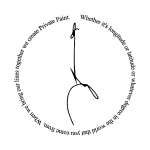Home interior designs have become an essential part of modern living, helping people design spaces that are both efficient and visually appealing. Whether you’re furnishing a new home, renovating an old one, or simply revamping your environment, home interior design plays a crucial role in shaping how your space feels and works. From paint schemes and furniture layout to lighting and accessories, interior design delivers harmony and style into your living spaces.
One of the most essential aspects of home Interior Design and Decoration Services designs is their ability to express the homeowners personality. The right design captures individual tastes, preferences, and lifestyle needs, turning a house into a unique sanctuary. Whether you love minimalist simplicity, classic elegance, or bold, eclectic touches, interior design allows you to translate those ideas into your space with balance.
Interior designs also maximize functionality. A well-designed room is not only beautiful but also convenient to live in. Smart design addresses layout, spacing, and usage, ensuring that each room serves its purpose effectively. For example, a kitchen designed with proper efficiency in mind can make cooking easier, while a bedroom with calming tones and thoughtful lighting can promote better rest. Design isn’t just about looks; it’s about how the space works for you every day.
Color selection plays a major role in interior design. The right colors can influence the mood of a room. Soft hues like light blues, greens, and beiges often create a calming atmosphere, while bold shades like reds and oranges bring energy and vibrancy. Color can also be used to emphasize focal points, create visual flow, and bring harmony between different areas of the home.
Lighting is another key element in interior design. Good lighting not only illuminates a space but also adds depth, warmth, and ambiance. A combination of ambient, task, and accent lighting can elevate the look and feel of any room. Designers often use lighting strategically to highlight artworks, architecture, or furniture, creating a layered and well-lit environment that feels inviting.
Furniture selection is at the heart of any interior design plan. The size, style, and placement of furniture define both functionality and flow. Designers choose furniture pieces that fit the rooms scale and enhance the intended use. For example, a cozy reading nook needs a comfortable chair and good lighting, while a living room meant for entertaining might focus on seating arrangements and open space. The right furniture layout ensures comfort without sacrificing visual appeal.
Textures and materials also play a role in home interior designs. Combining wood, metal, glass, fabrics, and natural elements builds contrast and richness in the space. A mix of smooth, rough, soft, and shiny surfaces brings a tactile quality that makes a room feel more dynamic and lived-in. Designers often use textures to balance out color schemes or to introduce warmth and interest to neutral palettes.
Wall décor, rugs, and accessories finish the design of a space. Art, mirrors, photographs, and shelves allow for self-expression while adding personality and style. Area rugs can add comfort, especially in open-plan living areas. Accessories like pillows, throws, and plants bring in pops of color and texture, while helping to soften and personalize the space.
Storage solutions are another important part of interior design. A well-designed space considers both aesthetics and organization. Built-in shelving, hidden storage, and multi-functional furniture help reduce clutter while maintaining the visual flow of the room. A neat and organized space promotes ease, making it more enjoyable to live in.
Sustainability is becoming a growing focus in home interior designs. More people are choosing eco-friendly materials, energy-efficient lighting, and locally sourced furnishings. Designers are also incorporating vintage or upcycled items, which not only promote sustainability but also add character and history to the home. Sustainable design choices are not only good for the planet but can also result in healthier, more natural living environments.
One of the best things about home interior designs is their flexibility. Trends come and go, but good design is timeless. Whether youre drawn to Scandinavian minimalism, industrial chic, bohemian flair, or traditional elegance, your home can be designed to suit your taste while remaining functional for years to come. Designers often mix elements from various styles to create a balanced and personalized look that doesnt feel outdated.
Technology has also made interior design more convenient than ever. Online platforms, 3D planning tools, and virtual consultations make it easier for homeowners to get professional design help. Whether youre working with a professional or trying your hand at DIY design, these tools allow you to plan with layouts, colors, and furniture arrangements before making any changes.
Ultimately, home interior design is about creating a space that feels right for you. It’s about efficiency, but also about emotion and identity. A well-designed home supports your lifestyle, reflects your personality, and makes every day more enjoyable. Whether big or small, every design decision contributes to a space that truly feels like home.

0 Comments